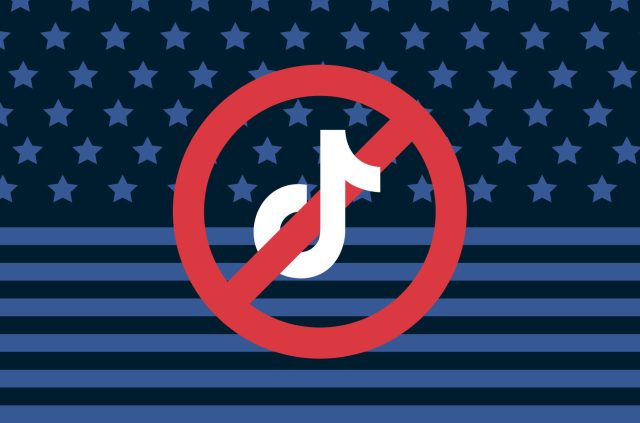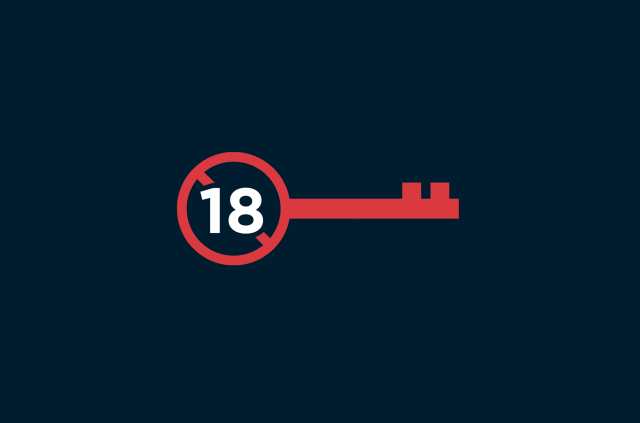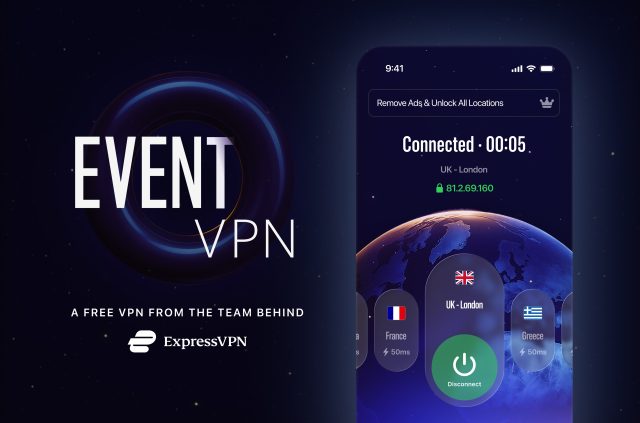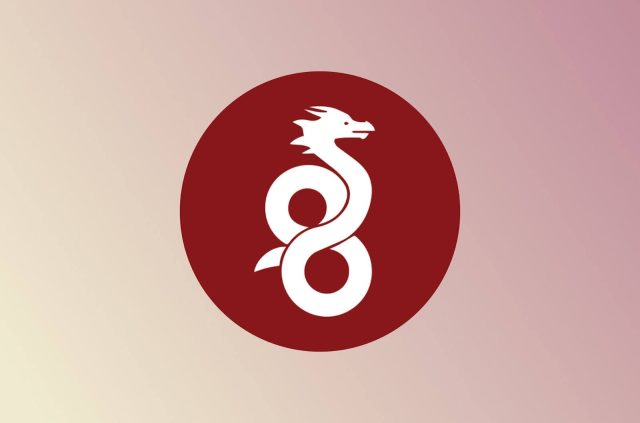Complete list of countries that have banned or restricted TikTok

TikTok has become one of the most widely used social media platforms, with billions of users globally. But its rapid rise has also sparked controversy. Concerns over data privacy, national security, and content moderation have led to bans, restrictions, and increased regulatory scrutiny in more than 30 countries.
Some nations have fully banned TikTok, while others have imposed partial restrictions—such as limiting access on government devices—or are considering stricter regulations. In response, TikTok has challenged these measures, arguing that the platform promotes free expression and innovation.
Below, we explore where TikTok is currently restricted, which countries are considering bans, and what alternatives you can use instead.
Jump to...
All regions where TikTok is regulated
Full bans
Parital bans
Reversed bans
Proposed bans
Why TikTok bans matter
How to unblock TikTok
Top TikTok alternatives
All regions where TikTok is regulated in 2024
Since bursting onto the scene in 2016, TikTok has captivated the world with its addictive short videos, creative filters, and viral trends. TikTok has skyrocketed to over two billion users globally. But with great power comes great scrutiny.
The app’s rapid rise and its extensive data collection have sparked a wave of concerns among governments and regulators. Some nations have opted for full bans, while others have chosen partial restrictions or proposed new regulations.
As of May 2024, here is a complete list of the countries and regions where TikTok is currently regulated:
| Region | Country/Territory | Status | When |
| Africa | Senegal 🇸🇳 | Fully banned | Blocked since August 2023. |
| Somalia 🇸🇴 | Proposed ban | Announced ban in August 2023. Not enforced yet. | |
| Kenya 🇰🇪 | Proposed ban | A petition has been filed to ban TikTok due to unregulated content. No government action yet. | |
| Asia | Afghanistan 🇦🇫 | Fully banned | Banned in April 2022. |
| Armenia 🇦🇲 | Previously blocked; no longer banned | Reported temporary loss of app functionality in October 2020. | |
| Azerbaijan 🇦🇿 | Previously blocked; no longer banned | Restricted access in September 2020 and September 2023. | |
| Bangladesh 🇧🇩 | Previously blocked; no longer banned | Banned in November 2018. Various content removals were requested in 2020 and 2021, which have since been overturned. | |
| China 🇨🇳 | Local version available | TikTok doesn’t function, however its local version Douyin does. | |
| Hong Kong 🇭🇰 | Withdrawn | ByteDance has blocked TikTok since July 2020. | |
| India 🇮🇳 | Fully banned | Banned temporarily in April 2019 and permanently in June 2020. | |
| Indonesia 🇮🇩 | Previously blocked; no longer banned | Temporarily banned in July 2018. Ban lifted after content moderation. | |
| Iran 🇮🇷 | Fully banned | Blocked by both the country and TikTok. | |
| Jordan 🇯🇴 | Fully banned | Banned in December 2022. | |
| Kyrgyzstan 🇰🇬 | Fully banned | Banned in August 2023. | |
| Nepal 🇳🇵 | Fully banned | Banned in November 2023. | |
| Pakistan 🇵🇰 | Previously blocked; no longer banned | Imposed and lifted four bans from 2020 to 2021. | |
| Taiwan 🇹🇼 | Partial ban | Banned on government devices in December 2022. Considering extending to the private sector. | |
| Uzbekistan 🇺🇿 | Fully banned | Access was blocked in July 2021. | |
| Europe | Austria 🇦🇹 | Partial ban | Banned on work devices of federal employees in May 2023. |
| Belgium 🇧🇪 | Partial ban | Banned on government work devices in March 2023. | |
| Denmark 🇩🇰 | Partial ban | Banned on work devices of the Ministry of Defence in March 2023. | |
| Estonia 🇪🇪 | Partial ban | Banned on state-issued smartphones in March 2023. | |
| France 🇫🇷 | Partial ban | Banned on government employees' phones in March 2023. | |
| Ireland 🇮🇪 | Partial ban | Advised against use on official public sector devices in April 2023. | |
| Latvia 🇱🇻 | Partial ban | Banned on work devices of the Ministry of Foreign Affairs in March 2023. | |
| Malta 🇲🇹 | Partial ban | Blocked on all government devices in March 2013. | |
| Netherlands 🇳🇱 | Partial ban | Advised against use on government devices in November 2022. Officials ordered to delete the app in March 2023. | |
| Norway 🇳🇴 | Partial ban | Banned on work phones and tablets used by ministers and political advisors in March 2023. | |
| Russia 🇷🇺 | Restricted | Users in the country can only view content from Russian creators. | |
| United Kingdom 🇬🇧 | Partial ban | Banned on government devices in March 2023. | |
| North America | Canada 🇨🇦 | Partial ban | Banned on government-issued devices in February 2023. Provincial and territorial governments also banned the app. |
| United States 🇺🇸 | Partial ban | As of February 2025, banned on federal government devices. Some states and universities have also banned the app. | |
| Oceana | Australia 🇦🇺 | Partial ban | Banned on federal government-owned devices in April 2023. |
| New Caledonia 🇳🇨 | Temporary ban | A temporary ban was issued by France in May 2024 during protests. | |
| New Zealand 🇳🇿 | Partial ban | Banned on devices connected to Parliament in March 2023. |
Nations that have fully banned TikTok
TikTok’s journey has hit some serious roadblocks along the way. Eight countries have taken the extreme step of banning the app outright:
Senegal
In August 2023, Senegal decided to pull the plug on TikTok. This occurred after the arrest of opposition leader Ousmane Sonko.
Afghanistan
TikTok was banned in April 2022 at the same time as broader cultural restrictions, including bans on music, movies, and TV soap operas.
India
Back in June 2020, India imposed a nationwide ban on TikTok, along with 58 other apps. This made India the largest country to implement a full ban on the app, affecting millions of TikTok users in the country.
Iran
Iran completely banned TikTok in May 2018. The Iranian government has a history of blocking major social media platforms like YouTube, Instagram, X, WhatsApp, Facebook, and Telegram.
Jordan
In December 2022, Jordan imposed a full ban on TikTok amid intensive protests.
Kyrgyzstan
In August 2023, Kyrgyzstan banned TikTok over concerns about inadequate content regulation and its potential harm to children's mental health.
Nepal
Nepal banned the app in November 2023, citing concerns over its impact on “social harmony.” The ban came shortly after Nepal introduced a new rule requiring social media firms to establish liaison offices within the country to increase oversight and accountability of digital platforms.
Uzbekistan
In July 2021, Uzbekistan restricted access to TikTok as part of enforcing a new data localization law. The law mandates that the personal data of Uzbek citizens be stored on servers within the country.
Regions with partial bans on TikTok
While some countries have gone the whole nine yards by completely banning TikTok, many others have opted for partial restrictions, mainly on government devices.
North America
Canada and the U.S. were the first nations to restrict TikTok from government devices. Canada’s decision in February 2023 was driven by a need to mitigate “unacceptable” risks to privacy and security. The U.S. followed suit in the same month, with the federal government banning TikTok on its devices, albeit with some exceptions. This led to a domino effect, with over half of the U.S. states implementing similar bans on state government devices. Beyond government offices, some universities and even New York City have limited TikTok’s use on their Wi-Fi networks and city-owned computers, showing the depth of concern over the app’s potential impact. More on this below.
Europe
Across the pond, European NATO and EU countries soon echoed this sentiment, showcasing a broadly unified approach driven by cybersecurity and data protection worries. Belgium's Prime Minister Alexander de Croo voiced concerns about the app’s potential to harvest user data and manipulate content as key reasons for the ban. Denmark and the UK joined the bandwagon, pointing out the need to protect sensitive data on official phones. The European Commission and Parliament amplified these concerns, stressing the need to shield systems from potential cybersecurity threats. This led to a quick and synchronized rollout of bans on government devices across several EU countries in early 2023.
Oceania
Australia and New Zealand were quick to follow the global trend, spurred by similar worries about data security and the protection of government secrets. In March 2023, reports surfaced that 68 Australian federal agencies had blacklisted TikTok on work-related mobile devices, with calls for an even broader federal ban. Not long after, TikTok was a no-go on all Australian government devices, including the phones of politicians. New Zealand wasn't far behind, with the Parliamentary Service pulling the plug on TikTok in the same month, for devices linked to Parliament, heeding warnings from the Government Communications Security Bureau (GCSB) about cybersecurity risks.
Countries that reversed TikTok bans
Armenia
In the thick of the Nagorno-Karabakh conflict in October 2020, Armenia reported disruptions in TikTok's functionality. However, the app's blockage was short-lived, with access restored once the immediate tensions eased.
Azerbaijan
Azerbaijan found itself in a similar situation during the Nagorno-Karabakh conflict, restricting access to TikTok in September 2020 and again in September 2023. Azerbaijan lifted the restrictions at the end of October the same year.
Bangladesh
In November 2018, Bangladesh blocked the app as part of a broader battle against harmful content. By August 2020, after TikTok agreed to remove “offensive” videos uploaded from Bangladesh, the government lifted the ban. There are still calls for a ban, with no action yet.
Indonesia
July 2018 saw Indonesia temporarily ban TikTok, pointing to inappropriate content as the main culprit. The ban was lifted shortly after the platform agreed to implement stricter content guidelines and take active steps to monitor and remove problematic content.
New Caledonia
France took the dramatic step of blocking TikTok in its Pacific territory of New Caledonia in May 2024, amid unrest. While the ban is still ongoing, it’s described as temporary, though no specific timeline has been released for its lifting.
Pakistan
Pakistan's relationship with TikTok has been a rollercoaster, with the country imposing and lifting four bans between 2020 and 2021. The bans were primarily due to concerns over immoral and indecent content. Each time, TikTok responded by promising to adhere to local content standards, leading to the eventual lifting of restrictions in November 2021.
Countries proposing to ban TikTok
As more countries adopt regulations on TikTok, two African nations are considering significant actions against the platform amid concerns over its influence and potential risks.
Somalia
In August 2023, Somalia announced a proposal to ban TikTok, Telegram, and the online betting website 1XBet. The proposal reflects a growing unease about how these platforms could potentially be used to disseminate harmful content to the public. The status of this proposal is pending, as authorities continue to weigh up if they want to implement these regulatory measures.
Kenya
In April 2024, a petition in Kenya’s parliament called for a ban on TikTok. The petition highlighted issues such as violence, hate speech, and offensive behavior on the platform. However, the Kenyan government has so far recommended against a full ban. Instead, the Information and Communication Ministry suggested a co-regulation model, where TikTok would need to screen its content to comply with local laws and provide quarterly reports on its moderation efforts. The proposal is still under consideration.
Why TikTok bans matter globally
A blow to internet freedom
The trend of banning and restricting TikTok highlights growing concerns about internet freedom. When a government blocks a widely used app, or limits access to it, it sets a precedent for broader censorship. Today it’s TikTok; tomorrow, it could be any platform that challenges the status quo. This kind of control can lead to a more restrictive digital environment, limiting access to diverse content and curbing creativity and social interaction.
Moreover, these bans can have significant economic impacts. TikTok is a major source of income for content creators, influencers, and small businesses. A ban disrupts these economic activities, cutting off critical revenue streams and affecting livelihoods. This impact is particularly severe in regions where digital entrepreneurship offers a rare opportunity for financial independence.
Security and privacy concerns
On the flip side, the concerns driving these bans aren’t necessarily without merit. Governments argue that TikTok’s data collection practices pose national security risks. There are fears that personal information could be accessed by foreign entities and potentially used maliciously. While these concerns are not unique to TikTok, the app’s ownership adds an extra layer of complexity.
Content regulation is another valid issue. TikTok’s algorithm sometimes promotes content that can be harmful or misleading. By imposing bans, governments aim to protect their citizens, particularly younger users, from exposure to inappropriate or dangerous content. This protective stance reflects a broader concern about the influence of unregulated digital platforms on society.
The “splinternet” effect
The push to ban TikTok also ties into the concept of digital sovereignty. Nations want to assert control over their digital environments, ensuring that foreign tech companies comply with local laws and standards. However, this move towards digital sovereignty can also lead to the “splinternet,” an internet split into multiple webs based on location. This fragmentation runs counter to the original spirit of the internet as a decentralized space for universal access and free information flow. While these measures can strengthen national security and protect citizens, they can also compromise global connectivity and the free exchange of ideas.
This focus on TikTok raises questions about other social media platforms. Facebook, X, and Instagram have all faced various forms of regulation and bans in different countries for similar reasons.
Balancing the scales
Ultimately, the debate over TikTok bans reflects larger tensions between security, privacy, and freedom. These bans and restrictions highlight the need for a balanced approach that protects users without undermining the principles of an open internet. While protective measures are understandable, it’s important to consider the broader impact on digital freedom and economic opportunity. As we face these challenges, striking a balance between security concerns and the advantages of a free and open internet is key for shaping the future of online interactions.
In the meantime, for users affected by these restrictions, finding ways to access TikTok and similar platforms can be a priority. Whether you’re a content creator or a casual viewer, there are ways to bypass TikTok bans and alternatives to explore.
How to unblock TikTok
It’s not just countries that block TikTok but also schools or offices, which block it through their Wi-Fi networks. Whatever the reason, if TikTok is blocked for you, there are ways around it.
Unblocking TikTok with a VPN
Using a VPN like ExpressVPN can help you bypass restrictions by replacing your IP address, making it appear as though you're browsing from a different location or network where TikTok is accessible.
However, in rarer cases, you could be blocked through the location determined by your SIM card on your phone. In this case, a VPN alone might not be enough. In such cases, you would need to use a SIM card from a country where TikTok is not banned. You may also use a VPN to change your location for accessing TikTok’s web version on your computer (as the computer does not use a SIM card).
Top 5 TikTok alternatives
While unblocking TikTok with a VPN can be an effective solution, you might also want to explore other platforms offering similar experiences. The demand for short-form video content is far from dwindling, and several alternatives have emerged. For example, China has taken a unique approach: while TikTok is regulated and doesn’t function on local networks, its counterpart Douyin thrives within the country, offering a similar but localized experience.
If you find yourself in a region where TikTok is off-limits or simply want to explore other options, here are five TikTok alternatives that are making waves:
1. Instagram Reels
Instagram Reels is a great alternative for TikTok enthusiasts. Integrated within the Instagram app, Reels lets you create and share short, engaging video clips with your existing followers. With a vast array of editing tools, a rich music library, and fun AR effects, Reels provides a robust platform for creative expression.
2. YouTube Shorts
YouTube Shorts is YouTube’s response to the demand for short-form content. This feature allows you to produce and share 60-second videos packed with creativity. Leveraging YouTube's massive user base, Shorts offers access to an extensive music library, advanced editing tools, and the potential to reach a wide audience. Plus, there are monetization options for creators looking to earn from their content.
3. Triller
Triller has carved out its niche in the world of music and video creation. Favored by celebrities and influencers, Triller boasts AI-powered auto-editing tools that can transform your clips into professional-looking videos. With strong music integration and collaborative features, Triller is great for users looking to create standout content. It also supports live streaming and social sharing for a well-rounded experience.
4. Snapchat Spotlight
Snapchat Spotlight is all about viral, user-generated content. This feature taps into Snapchat’s large user base, making it easy for users to discover and share short videos. Spotlight offers creative tools and filters, and it emphasizes viral content. Participation in challenges and the opportunity to earn rewards based on the popularity of your posts add an exciting competitive element.
5. Likee
Likee is another popular alternative to TikTok, known for its vibrant and interactive features. It comes with a variety of video creation tools, special effects, and live-streaming options. It allows users to easily create themed videos, participate in trending challenges, and interact with a global audience.
Do you see TikTok bans or restrictions as a necessary measure or a step too far? Share your thoughts in the comments below.
Take the first step to protect yourself online. Try ExpressVPN risk-free.
Get ExpressVPN
















